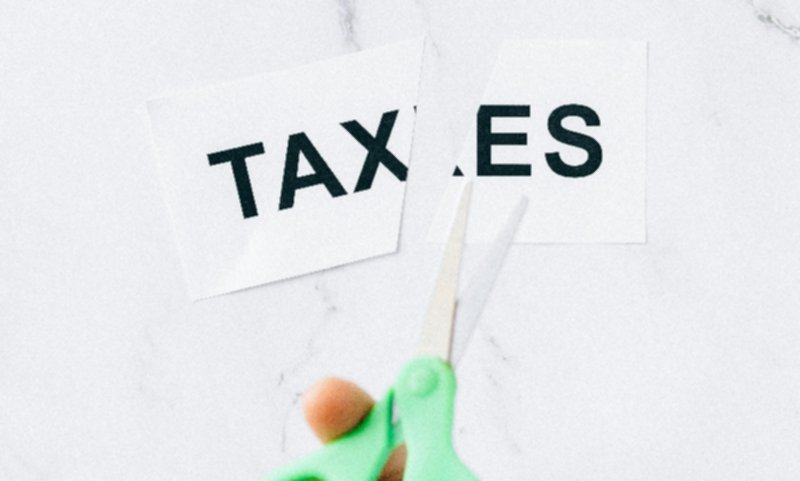2025-26 Tax Year – What UK Business Owners Can Expect
Complete Guide to Tax Changes, Thresholds, and Compliance Requirements for the Upcoming Financial Year
The 2025-26 tax year brings significant changes for UK businesses, with the implementation of Making Tax Digital for Income Tax, new sustainability incentives, and several threshold adjustments. Planning ahead is crucial to maximize benefits and ensure compliance with the evolving tax landscape.
Key Changes at a Glance
The upcoming tax year introduces several important modifications that will affect businesses of all sizes. Here’s an overview of the most significant changes coming into effect from April 2025.
- Making Tax Digital for Income Tax becomes mandatory for businesses with income over £50,000
- Corporation Tax changes for businesses with profits over £50,000
- New environmental tax incentives and reporting requirements
- Changes to R&D tax credit system for SMEs
- Updates to employment taxes and National Living Wage
Corporation Tax Changes
| Profit Threshold | 2024-25 Rate | 2025-26 Rate | Impact |
|---|---|---|---|
| Up to £50,000 | 19% | 19% | No change for small businesses |
| £50,001 – £250,000 | 25% (marginal relief) | 25% (marginal relief) | No change to marginal relief threshold |
| Over £250,000 | 25% | 25% | Main rate unchanged |
| Digital businesses | Standard rates | Standard rates + DST | Digital Services Tax applies to large tech companies |
A business with £75,000 profits will continue to benefit from marginal relief, resulting in an effective tax rate of approximately 22.5%. The exact calculation uses the formula: Tax = (Profits × 25%) – ((Upper Limit – Profits) × Marginal Relief Fraction).
Making Tax Digital for Income Tax (MTD for ITSA)
From April 2025, MTD for Income Tax becomes mandatory for self-employed businesses and landlords with annual business or property income over £50,000.
Step 1
Keep digital records using compatible software
Step 2
Submit quarterly updates to HMRC
Step 3
Submit end of period statement (EOPS)
Step 4
Submit final declaration
The new points-based penalty system for late submissions and payments will be fully implemented. Businesses may receive a £200 penalty if they reach 4 points for late submission obligations.
R&D Tax Credit Changes
| Scheme | 2024-25 | 2025-26 | Impact |
|---|---|---|---|
| SME Scheme | 86% enhancement | 86% enhancement | No change to enhancement rate |
| RDEC (Large companies) | 20% credit | 20% credit | Rate remains unchanged |
| Claim notifications | Required for first-time claimants | Required for all claimants | Additional administrative step |
| Digital claims | Optional | Mandatory | Paper claims no longer accepted |
Employment Taxes and National Insurance
1 National Living Wage Increase
The National Living Wage will increase to £11.44 per hour from April 2025, affecting all workers aged 21 and over. This represents a significant increase in payroll costs that businesses need to budget for.
2 Employment Allowance
The Employment Allowance remains at £5,000, allowing eligible businesses to reduce their employer National Insurance contributions liability.
3 IR35 Rules
The off-payroll working rules (IR35) remain unchanged, but HMRC has indicated increased compliance activity. Businesses engaging contractors should ensure proper status determinations.
VAT Changes and Thresholds
| VAT Element | 2024-25 | 2025-26 |
|---|---|---|
| Registration threshold | £90,000 | £90,000 (frozen) |
| Deregistration threshold | £88,000 | £88,000 (frozen) |
| Standard rate | 20% | 20% |
| MTD for VAT | Mandatory for all VAT-registered businesses | No change – remains mandatory |
- Consider voluntary registration if接近 threshold to recover input VAT
- Review VAT schemes (Flat Rate, Annual Accounting) for potential savings
- Ensure MTD-compliant software is in place for VAT reporting
- Check if you qualify for the VAT margin scheme for second-hand goods
Environmental Tax Measures
The 2025-26 tax year introduces several green incentives and penalties aimed at encouraging sustainable business practices:
| Initiative | Details | Effective Date |
|---|---|---|
| Climate Change Levy | Rates increase for electricity, gas and solid fuels | April 2025 |
| First-Year Allowances | 100% allowance for energy-saving equipment | April 2025 – March 2026 |
| Plastic Packaging Tax | Rate increases to £210.82 per tonne | April 2025 |
| Carbon Border Adjustments | New import charges on carbon-intensive products | Phased from 2025 |
Business Rates Update
- 75% relief for retail, hospitality and leisure sectors extended to March 2026
- Transitional relief scheme extended to limit bill increases following revaluation
- Improvement relief: no rate increases for 12 months after property improvements
- Small business multiplier frozen for another year
Dividend Tax Changes
| Dividend Band | 2024-25 Rate | 2025-26 Rate |
|---|---|---|
| Basic rate | 8.75% | 8.75% |
| Higher rate | 33.75% | 33.75% |
| Additional rate | 39.35% | 39.35% |
| Dividend allowance | £500 | £500 |
Dividend Example:
A director receiving £40,000 in dividends (with no other income) would use their £500 dividend allowance and pay:
– 0% on first £500 = £0
– 8.75% on next £37,700 = £3,298.75
Total tax = £3,298.75
Capital Allowances
| Allowance | 2024-25 | 2025-26 | Details |
|---|---|---|---|
| Annual Investment Allowance (AIA) | £1 million | £1 million | Permanent £1 million allowance |
| Structures and Buildings Allowance (SBA) | 3% per year | 3% per year | No change to rate |
| Writing Down Allowance (WDA) | 18% / 6% | 18% / 6% | Main pool and special rate pool unchanged |
| First-Year Allowances | Various | Extended for green tech | Enhanced allowances for energy-saving equipment |
Planning Strategies for 2025-26
Q1 2025
Prepare for MTD for Income Tax implementation
Q2 2025
Review capital investment plans to maximize allowances
Q3 2025
Consider dividend strategies before tax year end
Q4 2025
Plan for 2026-27 changes and budget updates
- Assess MTD readiness and implement compatible software
- Review business structure for tax efficiency
- Plan capital expenditures to maximize allowances
- Consider timing of income and expenses
- Evaluate green initiatives for available incentives
- Update payroll systems for National Living Wage increase
- 31 January 2026: Self Assessment tax return deadline for 2024-25
- 1 April 2026: Corporation Tax payment for year-end 31 March 2025
- 5 October 2025: Register for Self Assessment if newly self-employed
- Quarterly: MTD for Income Tax submissions if applicable
Need Help Navigating the 2025-26 Tax Changes?
Our tax specialists can help you understand how these changes affect your business, implement compliance measures, and develop strategies to minimize your tax liability while maximizing available incentives.
Get Tax Planning Advice

